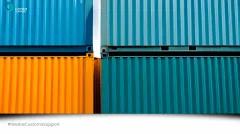As an exporter of goods or a service provider to an exporter, you are asked to provide a written declaration that states whether your shipment contains dual-use or military goods.
What Are Dual-Use Goods?
The European Commission defines dual-use goods as products and technologies normally used for civilian purposes but which may have military applications. If the products were specifically designed for military purposes they are called military goods. Both dual-use and military goods are also referred to as strategic goods.
Shipping strategic items is subject to very strict international regulations and often requires an export license. Violating these regulations is considered to be a criminal offence. Therefore it is important to carefully identify dual-use or military goods.
How Can I Determine If My Product Is Dual-Use?
With HS-classification, you can use the General Rules of Interpretation (GRI) to determine the correct code for an item. Unfortunately, there is no such rule for strategic goods.
The basis for identifying military goods in the EU is the Common Military List (CML). Military goods are divided into 22 categories. The core element is the “specially designed for military use” criterium. The list is updated annually and you can find the latest version here.
If a match is found, the result of your classification will be a number like e.g. ML8.a.16.c.
More common ánd more challenging are dual-use items. The foundation for dual-use items is laid in the Wassenaar Arrangement and currently has 42 member countries. In the European Union, it is translated into the dual-use regulation 428/2009. In the annexe to the regulations, the dual-use items are described in 10 different categories. The more than 250 pages annexe – often referred to as the “dual-use list” is updated annually. You can find the latest version here.
If a match is found, the result of your classification will be a so-called ECN number like e.g. 5A001.a.1.
Know It All
Classifying strategic products requires close cooperation between the product expert – like e.g. an engineer – and the regulations expert. On the one hand, you need to understand certain technical definitions and specifications of the product. On the other hand, the classification may depend on the intended use of the product. This process may require input from various sources like product sheets, drawings, manufacturer details and even Google search results.
When you have found your match, you carefully need to record the classification number and the information you have used to determine your classification. This is used as evidence in case the authorities question your decision. Like all customs documentation, the classification information must be archived for 7 years.
Be Sure Not to Be a Wrong
That sounds harsh, but exporting military or dual-use goods to restricted countries can lead to penalties and even jail time. Correctly classifying your products is therefore extremely important. If you have any questions or want to be sure you have correctly qualified your goods, contact an export control specialist.
Customs Support Group believes ethical operations are paramount. Read more about our team and our values here.
Special thanks to Eric Both, Managing Partner of the Export Control Group for his contribution to this post.














